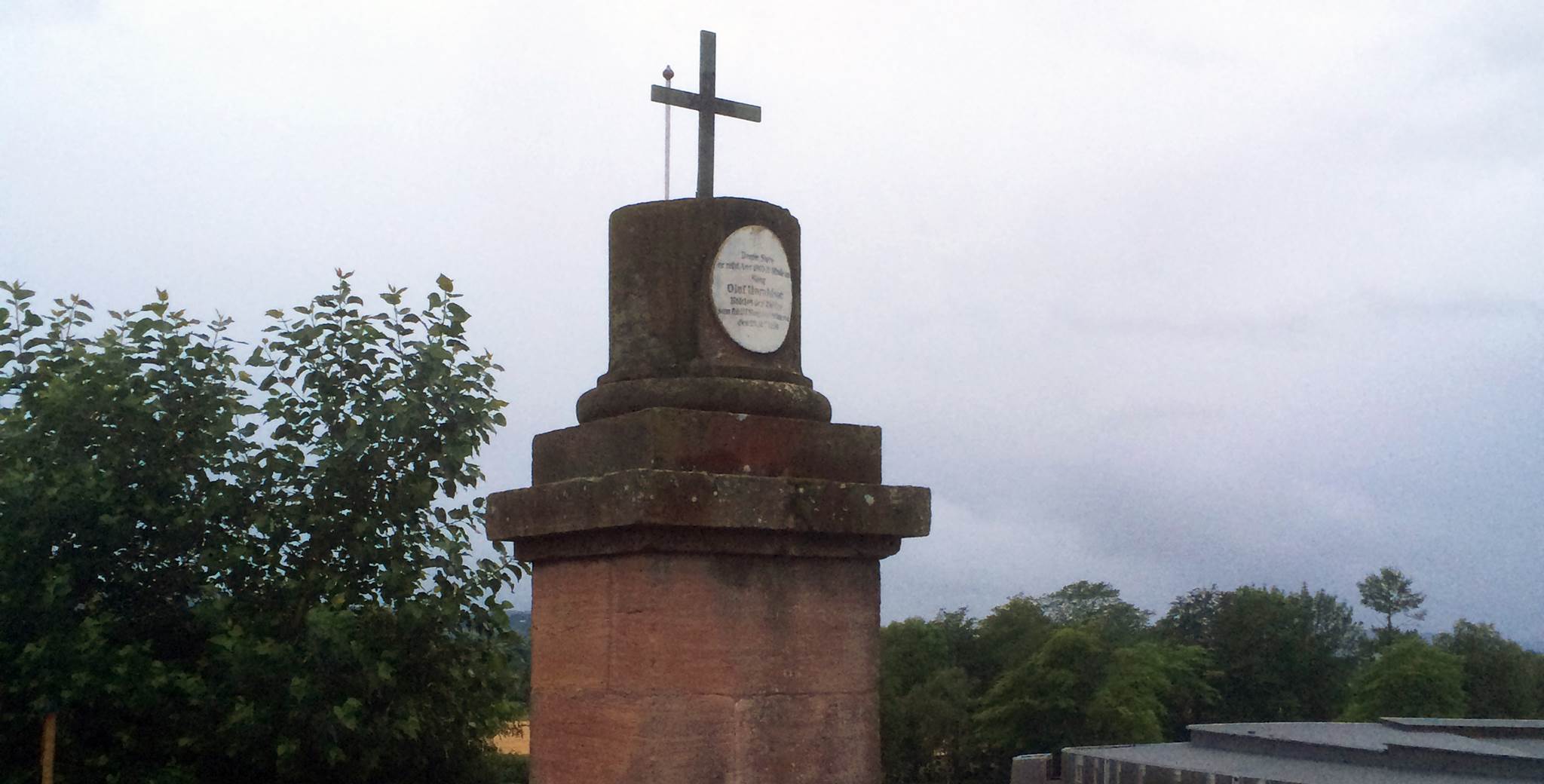

Verdal, Trøndelag
Owned by the National Trust of Norway since 1856.
More memorials and stories. Legend has it that there was a wooden cross commemorating Saint Olav on this hill south-east of Stiklestad church already in the Middle Ages. The present Saint Olav monument (1807) was erected on the initiative of regional governor Adler, who paid for the monument to be sculpted in Denmark by Professor Nicolai Dajon of the Acacemy of Fine Art based on drawings by Ole von Lyng from Verdal. The first stone memorial in this location was erected in 1710, paid for by an officer by the name of Johan von Lemfort and his wife. The new Saint Olav monument stood side by side with the old Lemfort monument for many years. The monument erected in 1807 has an iron cross on top, as had the old monument.
World War II and the Saint Olav monument. In 1944, the Norwegian Nazi party Nasjonal Samling (abbreviated NS) wanted to erect a monument of its own at this location, despite strong objections from the National Trust of Norway. Party leader Vidkun Quisling unveiled the NS monument, which included a nine-metre stone monument decorated with a swastika. This monument was destroyed after the liberation. It was pulled down and broken into several pieces, the swastika was chiselled off, and the stone was then buried while the Saint Olav monument was put back in its place. This location is thus doubly symbolic, as it has links to both Saint Olav and World War II.
Things to do in the area: Stiklestad National Culture Centre communicates the political, cultural and spiritual dimensions of the heritage of Saint Olav. This work includes year-round medieval history teaching activities, the historical play about Saint Olav, exhibitions, services for schools and culture centre functions, as well as a large museum area with 30 buildings of historical interest.
Sources: En reise gjennom norsk byggekunst, ed. Terje Forseth. National Trust of Norway 1994/ww.stiklestad.no (8 August 2018)
Opening hours
- The Saint Olav monument is a part of nthe open-air museum at Stiklestad.
Ticket prices
Visit us
Stiklestad allé 3507656 Verdal
Contact us
- Tlf: 74 04 42 00
- Epost: dentronderske@fortidsminneforeningen.no
- Epost: stiklestad@snk.no


